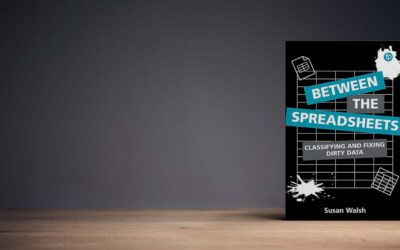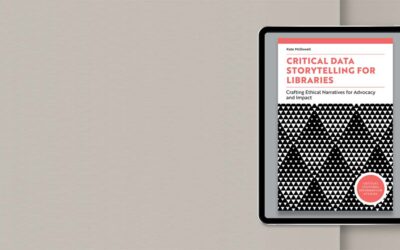How to Create Significant Learning in a Library Setting
Lauren Hays
Recently, I was made aware of Fink’s Taxonomy of Significant Learning. Dr. Fink developed this taxonomy because he felt that Bloom’s taxonomy, which focuses on cognitive learning, does not go far enough in recognizing other types of learning that create change in learners.
I spent some time reviewing the taxonomy and found it very useful for thinking about types of learning I want to develop for learners. With adults, it can be important to move beyond purely cognitive learning because adults can always look something up. While adults still need to be able to remember, understand, apply, analyze, evaluate, and create (Bloom’s Taxonomy), adults also need to be able to find value in learning, understand others, and become self-directed learners.
Fink’s Taxonomy of Significant Learning includes six areas that interact, but are not hierarchical. Additionally, each area of significant learning can stand on its own.
The six areas are:
- Foundational Knowledge: understanding and remembering information and ideas; Foundational knowledge provides the basic understanding that is necessary for other kinds of learning.
- Application: skills, critical thinking, creative thinking, practical thinking, and managing projects; The act of making new connections gives learners a new form of power, especially intellectual power; application learning allows other kinds of learning to become useful.
- Integration: connecting information, ideas, perspectives, people, or realms of life; The act of making new connections gives learners a new form of power, especially intellectual power.
- Human Dimension: learning about oneself and others; This kind of learning informs students about the human significance of what they are learning
- Caring: developing new feelings, interests, and values; When students care about something, they then have the energy they need for learning more about it and making it a part of their lives. Without the energy for learning, nothing significant happens.
- Learning How to Learn: becoming a better student, inquiring about a subject, becoming a self-directed learner; This kind of learning enables students to continue learning in the future and to do so with greater effectiveness. (Fink, 2003, pp. 3-6).

How can librarians use Fink’s Taxonomy of Significant Learning?
Fink’s Taxonomy of Significant Learning can be used as a tool for ensuring you develop learning in different areas in order for significant learning to occur. To know which area of significant learning to focus on it is necessary to start by identifying learning goals for the session.* Then, you can consider which area of significant learning aligns with the learning goal and plan activities to support the goal.
For example, let’s say your learning goal for an instruction session is:
Learners will be able to select a database for an information need.
This learning goal aligns best with Foundational Knowledge. Learners need to remember specific information in order to meet the goal. Therefore, you would want to create activities that are going to provide opportunities for learners to learn the content of each database, and then set aside time for learners to practice identifying databases for different information needs.
A second example learning goal that I suspect many of us share is that:
Learners will value library resources and services.
While this may not be something we always write down as a learning goal, we do want individuals in our institutions to understand the value of the library. This goal aligns with Caring. In order to create learning opportunities for individuals to find value in the library, the learning must be personal. Individuals must be given opportunities to see how library services benefit themselves and others. This can be done by having library users share their stories, and, more importantly, connecting library resources and services directly to individual needs. To the extent possible, I always suggest knowing who is attending an instruction session and tailoring content to those individuals’ specific needs. The Caring aspect of Fink’s Taxonomy of Significant Learning can also be fostered through excellent service, connections made at new hire/student orientations, and the cultivation of professionalism that is known by the entire institution.
In my next blog post, I will share ideas for how to create learning opportunities in the areas of application, integration, human dimension, and learning how to learn.
*I wrote a previous blog post on setting learning goals that can be read here.
References
Armstrong, P. (2010). Bloom’s Taxonomy. Vanderbilt University Center for Teaching. https://cft.vanderbilt.edu/guides-sub-pages/blooms-taxonomy/
Fink, L. D. (2003). What is significant learning? https://www.wcu.edu/WebFiles/PDFs/facultycenter_SignificantLearning.pdf
Fink, L. D. (2013). Creating significant learning experiences: An integrated approach to designing college courses (Rev. Ed.). John Wiley & Sons.
Lauren Hays
Lauren Hays, PhD, is an Assistant Professor of Instructional Technology at the University of Central Missouri, and a frequent presenter on topics related to libraries and librarianship. Her expertise includes information literacy, educational technology, and library and information science education. Please read Lauren’s other posts relevant to special librarians. And take a look at Lucidea’s powerful integrated library systems, SydneyEnterprise, and GeniePlus used daily by innovative special librarians in libraries of all types, sizes and budgets.
Never miss another post. Subscribe today!
Similar Posts
End-of-Calendar-Year Reflections for School Librarians
The end of the calendar year offers school librarians a chance to reflect on what’s working, make thoughtful adjustments, and plan for the year ahead.
Library Instruction: Learning Styles Are Out, Evidence-Based Practices Are In
For instructors and educators of all types, it’s vital to realize that evidence-based practices are more effective than catering to the myth of learning styles.
Interview with Susan Walsh:
Dirty Data, AI, and the 2nd Edition of “Between the Spreadsheets”
Author Susan Walsh discusses the new edition of “Between the Spreadsheets,” sharing insights on fixing dirty data, AI’s impact, and her COAT framework.
Interview with the Author:
Dr. Kate McDowell on Storytelling for Libraries
Dr. Kate McDowell shares how data storytelling helps libraries advocate, counter misinformation, and build trust for future generations.




Leave a Comment
Comments are reviewed and must adhere to our comments policy.
0 Comments